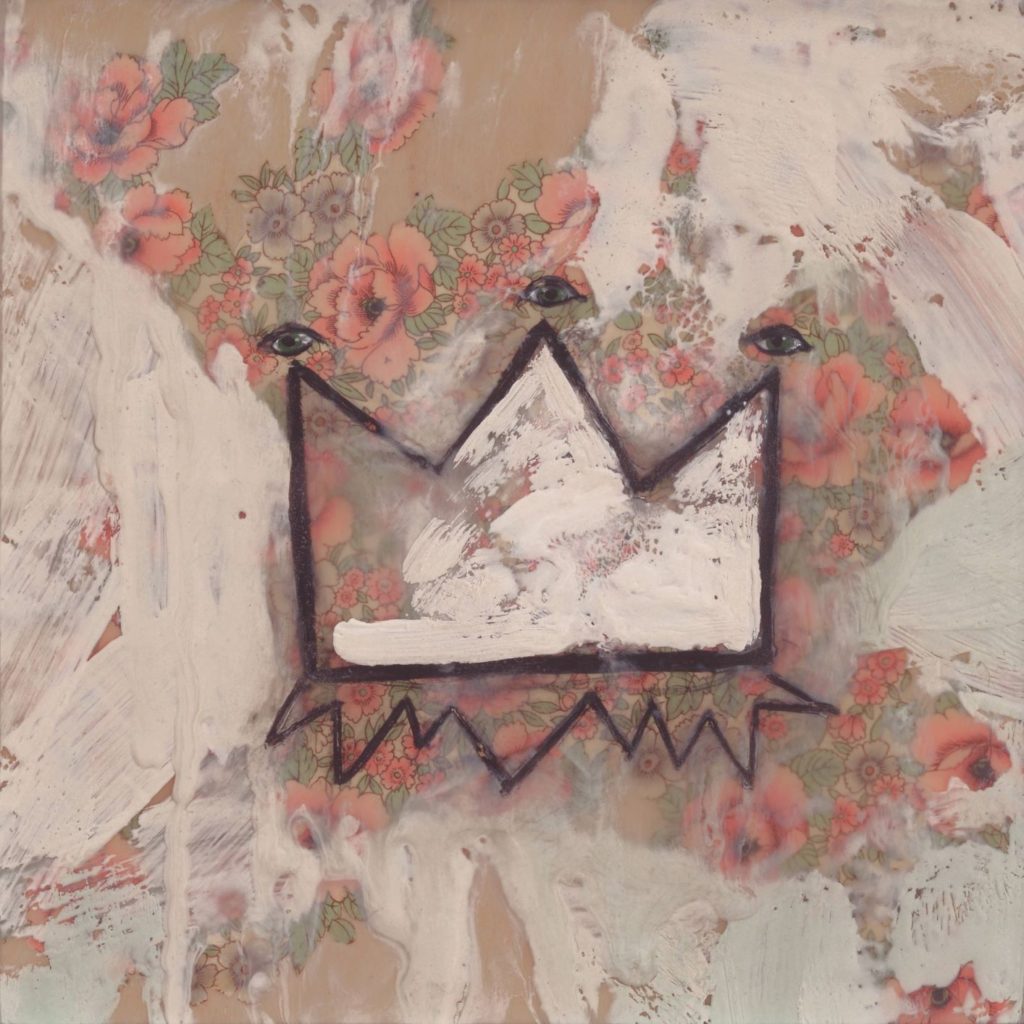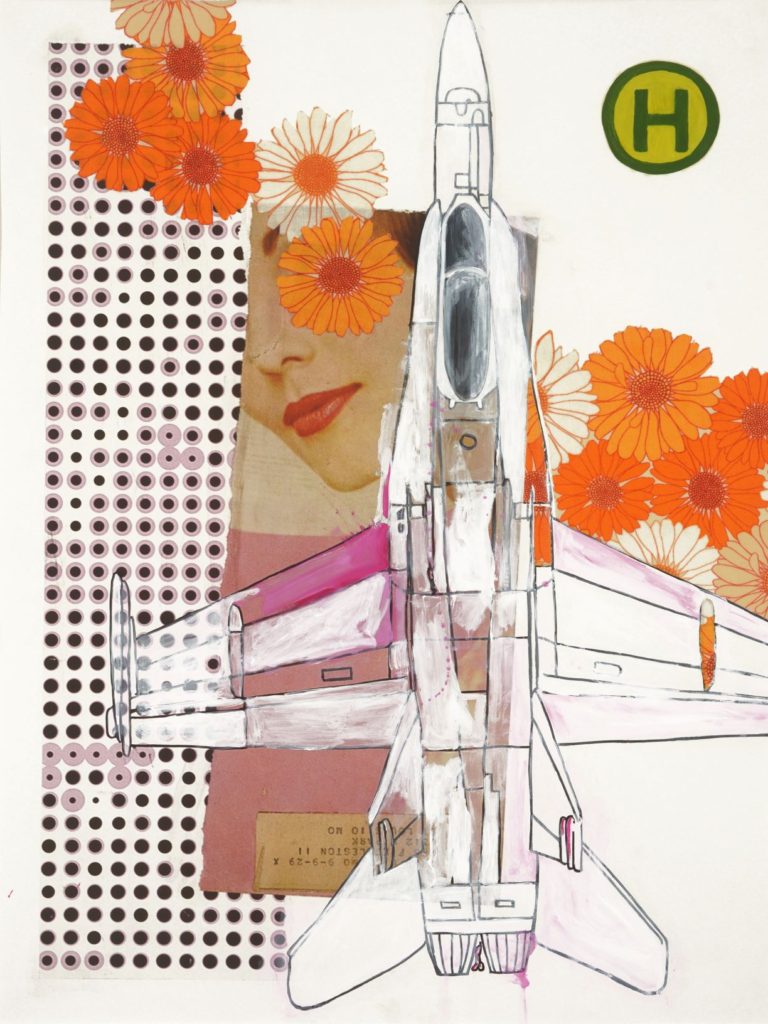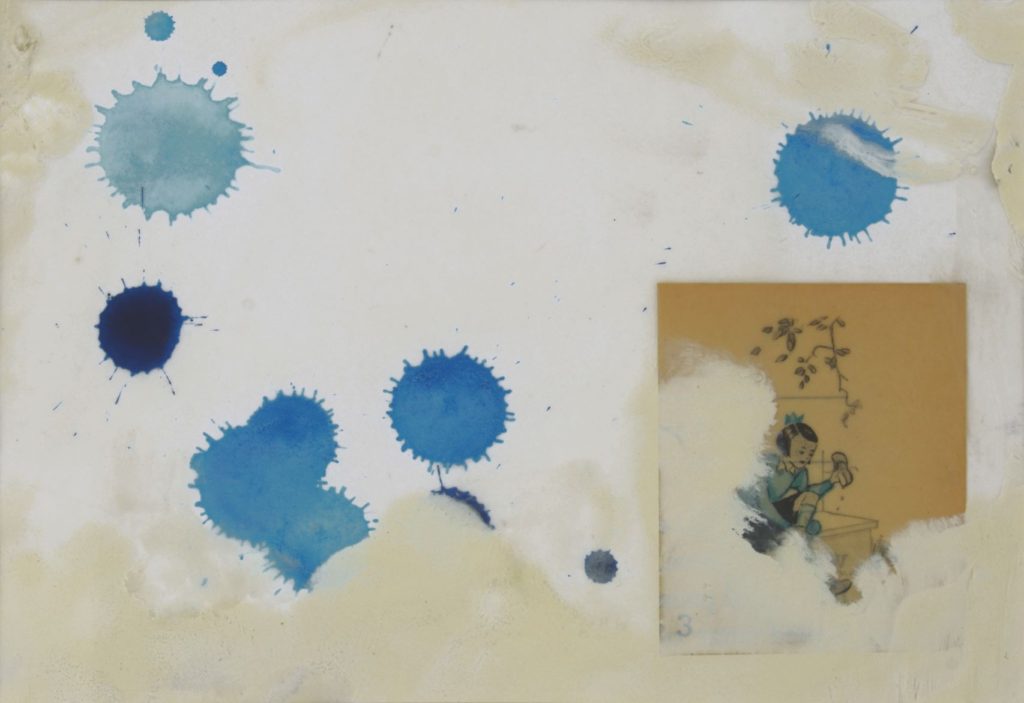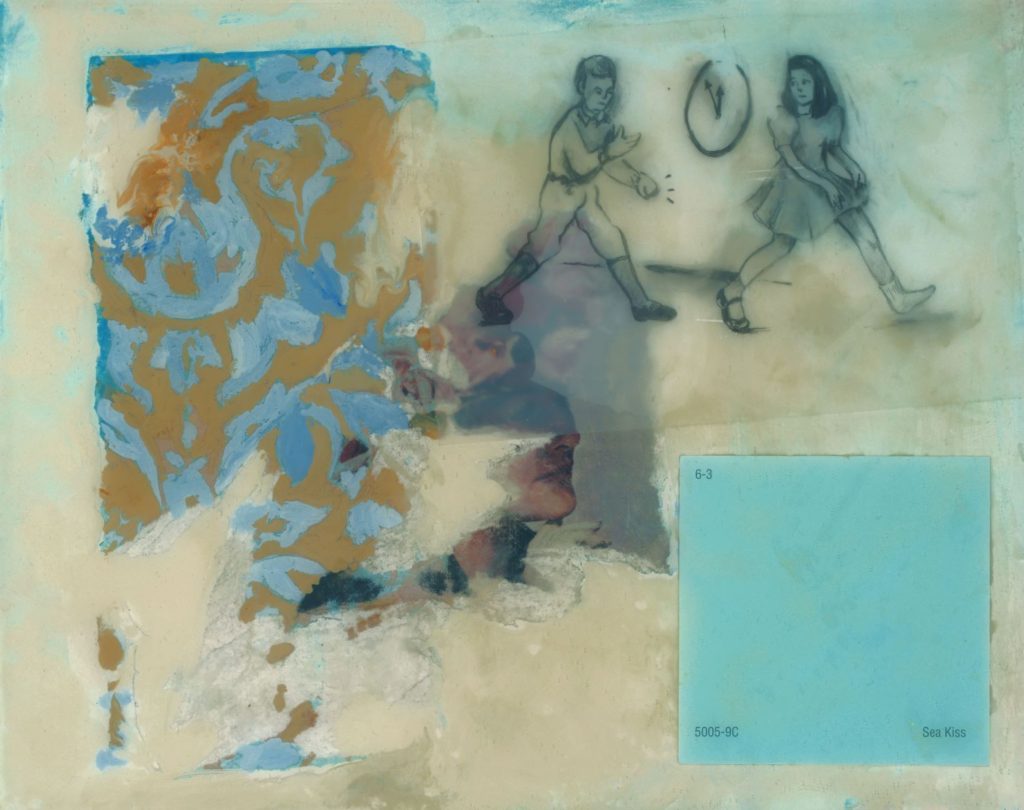
Artist Deborah Douglas, who also happens to be an art professor at Saint Louis University, can’t imagine herself doing anything else.
Art and writing were always her primary interests in school.
“It’s interesting to look back over time to one’s art, and see that some of the earliest interests and concerns remain,” Douglas said. “They may shift, in terms of variations of ideas and the way I’m approaching the image visually, but I can trace the history of this development. These ideas are a part of me. They are inextricably linked.
“I tell my students that the way that they work, and the themes that interest them, will probably stay with them as they mature in their work,” she added. “When you make your work honestly, your true self is there.”

No stranger to exhibiting her work, Douglas’ current exhibition can credit its creative origins to current events and situations that resonated with the artist. “Some Things I Know, Some Things I Only Believe” consists of 28 works of art, in addition to a wall installation, as well as displays on the windows looking out to Grand Avenue from The Gallery at The Kranzberg, where the show can be viewed through Feb. 20, by appointment.

Working with oil, enamel, encaustic painting, watercolor, ink, graphite, collage and digital prints, Douglas’ art tends to focus on issues of gender, feminism and empowerment through personal and societal imagery.
She has exhibited regionally and nationally in Los Angeles, New York, Minneapolis, Raleigh, North Carolina, St. Louis, and other cities. Recent local solo exhibitions include those at St. Louis Community College at Wildwood, The Sheldon Art Galleries and Schmidt Art Center in Belleville, Illinois.
The impetus behind “Some Things I Know, Some Things I Only Believe” was a call for application for the 2020 theme of “Knowledge,” which was part of the 2020 exhibition season (postponed because of the pandemic).
“I was excited to see that, because knowledge is what I do,” Douglas said. “We don’t value education as highly as we should in this country. We don’t value the arts as much as we should, either. I’d like to see that turn around.”

The title of the show evolved to what it is now due, in part, she said, to the current climate of “fake news,” bending of truth, and questioning reality.
For her, the title became a kind of mantra.
“I found that in saying it, I felt comforted by the idea that we can draw a line between knowledge, science and the like, and our belief system, which isn’t always based in fact. It was a way, in my mind to reconcile the two,” she said. “My message is to instill a sense of brightness in the bleak reality of our current situation. That’s why I wanted white frames and bright pops of color. Up close, things devolve a bit, as the meaning gets a little heavier.”
A longtime teacher of art and art history in the Department of Fine and Performing Arts at Saint Louis University, Douglas actually began “teaching” art as a child, when she would convince her friends to play school with her.
“I was kind of a nerd and seriously can’t believe I got them to go along with it! My heart has always belonged to both fields (art and teaching), simultaneously,” she said. “I love learning, and I want to instill that love in others. Working with images (and text) is how I sort out my internal processes and communicate my ideas about the world.”
Douglas feels the combined fields benefit her as an artist, and in turn, the students benefit, as well.
“I consider myself incredibly lucky to have a career that recognizes and expects me to be active in my field,” she said. “Saint Louis University is a Catholic, Jesuit institution, the mission of which embraces the education of the whole person, which, of course, includes the arts. My students get to see, through my work and that of art history, the importance of art as it relates not only to society, but to one’s own development as a member of our planet. I emulate what they might achieve in their own careers.
“Also, I have to say that the relationship is in ways symbiotic – I am energized and inspired by them at the same time I am teaching them the discipline they are exploring,” she added. “They take me more seriously when they see me working as a professional artist. It’s proof that they need to listen to me now and then, because I know some things (see: title of this exhibition)!”
The many materials she works with are chosen for a variety of reasons. The colors on hand can dictate what she uses; in other cases, the materials are chosen because of their inherent properties, like the transparency of watercolor, the flow and gloss of enamel, the opacity and texture of encaustic (wax), the expressiveness of oil or graphite, or the smooth control of ink.
“I like being able to switch back and forth. The collage elements are also something that are chosen for a variety of reasons: texture, pattern, figuration or for the implied meaning. My studio looks like I salvaged an art supply store!” she said. “You’d be hard pressed not to find a little bit of almost anything in it. I will say that working on paper or wood panels is probably my preferred supports. I like the smoothness. I happen to have a few canvases in my studio though, so don’t hold me to it, you may find them in my next exhibit.”
And though she didn’t set out to make art with an edge to it, looking back and making connections between pieces, she realized that was happening. She admits to having a wicked sense of humor, but also thinks of herself as a realist.
“Things in this world are dark. But things are funny, too. I guess I see the absurdity of life,” she said. “So in my work, there might be a line drawing of two school kids playing on a background of pastel colors (‘Sea Kiss’), but if you look closely, there is a reference to domestic violence, as the boy chases the girl in a threatening way – and that is certainly not funny; or a face in a drawing is ‘blind’ to reality, or a slight smirk belies the otherwise friendliness of an expression.

“I also use words to imply these things, too. Words are so loaded and so ambiguous at the same time. The visual image really controls the meaning, but text (either in titles, or as part of the image, shapes the viewer’s understanding. The words shape my understanding as I try to figure out what the work is telling me. Art comes from not believing what is going on in the world, and that brings me back to the idea of both knowing and believing.”
Douglas has served as juror for numerous professional and student art exhibitions. She holds a Bachelor of Arts degree from Truman State University and a Master of Fine Arts in Painting and Printmaking from Southern Illinois University Edwardsville.
Due to pandemic restrictions, “Some Things I Know, Some Things I Only Believe” at The Gallery at The Kranzberg is by appointment only. For more information or to book a viewing, visit kranzbergartsfoundation.org/visual-art/.






Thank you, Ms. Bennington, for highlighting my work at the Kranzberg! I hope people get a chance to check it out!